
PUMPA - SMART LEARNING
எங்கள் ஆசிரியர்களுடன் 1-ஆன்-1 ஆலோசனை நேரத்தைப் பெறுங்கள். டாப்பர் ஆவதற்கு நாங்கள் பயிற்சி அளிப்போம்
Book Free DemoCamel:
Camel lives in the desert, which is dry and receives scanty rainfall. They originated in North America some 45 million years ago. Then about 3 to 5 million years ago, they migrated to the South. Now, these are spread mostly in the deserts. Animals that live in the desert needs to overcome the excessive heat and the scarce water availability. Camels adapt these conditions in following ways:
1. Have long legs to keep the body away from the heat of the sand.
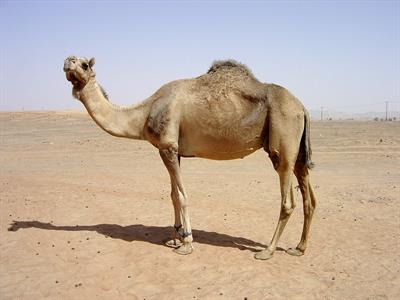
Camel
2. Camel drinks a large amount of water when there is water availability and then stores them in its body.
3. Camels excrete significantly less urine, and their dung is dry. They do not sweat. Since, a camel does not lose much water, it lives many days without drinking water.
4. The hump of the camel stores fat. In case of emergency, the camel breaks down the fat into energy and water required for nourishment. The hump present in the camel helps them travel long periods without water to survive in the desert's harsh conditions. Thus the hump acts as a fat reserve or an energy reserve.
Since the hump has fat, it acts to insulate the heat. The hump's fat acts as a blanket to the camel from the heat. Thus, the hump makes the animal stay cool against the hot and harsh climate of the desert.
The video below explains about the Camel's hump.
5. The camel has padded feet - large and flat feet that help to walk easily on the sand. The padded feet help to stop sinking onto the sand against its body weight and the weight it carries a load. It also protects the camel from the sand's heat. Camel is thus called the "ship of the desert".
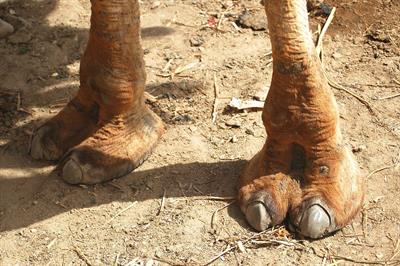
Padded feet of camel
6. Camel has long eyelashes and hairs to protect from the blowing dust particles in the eyes and ears.
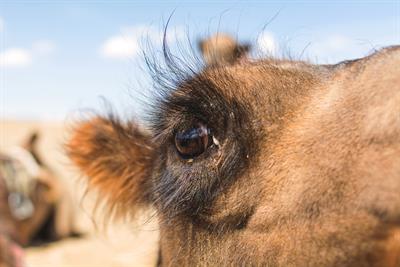
The long eyelashes of camel
7. Camels have thin, slit nostrils. Also, they keep the nostrils closed to avoid blowing sand and dust particles.
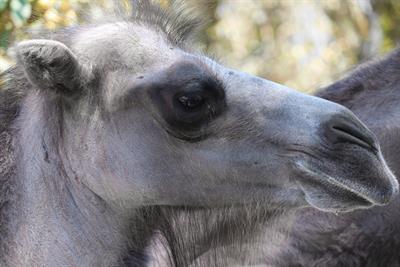
A closed nostrils of a camel 8. Camel has an extremely long large intestine or colon that reabsorbs the water, resulting in water retention.
9. Camels have a leathery mouth. It helps the camels to chew the thorny and spiky plants.
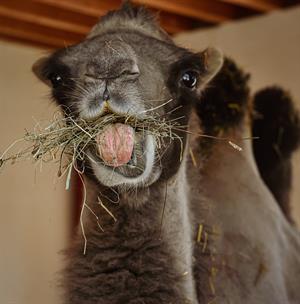
Camel eating thorny plants
10. The camel have a thick and shaggy coat which protects them in the winter season. During summer, the coat sheds or falls away when there is a temperature rise.
Reference:
https://ucmp.berkeley.edu/science/profiles/wedel_0609.php
https://www.flickr.com/photos/brennwald/2310336429/in/photolist-4wa5wH-doekE-21KFLb-NFboN-7UdfnF-bsdzy4-wF3N8V-af4Whu-rRSCk-4zB7bF-8gM7Zd-7a1UX5-6ezTyG-36WGnv-xdd4q-9FXW72-9afdYk-8AGeDX-gPFLP-6eSxdT-24Wdsr-3ZrQK3-8E9Ys6-9RGiBQ-9A7n7v-21HAndL-5aL3vj-rRUj1-4QMP6s-JSuMD9-6HjxsZ-5k8D4K-N6x5-2e2F3Dg-3fADDE-G2L9UB-4GmEcw-aC2zzA-t6h8E-rRSCp-Cap7W7-Mo2a7C-7sybBp-pMUpB-aC6v2W-rRSCt-zXTmK-6PAJnk-dmCoBq-5ARKYJ
https://commons.wikimedia.org/wiki/File:Camel-toe.jpg
https://libreshot.com/camel-eye/
https://pixabay.com/it/photos/cammello-animale-camelus-ferus-5638601/